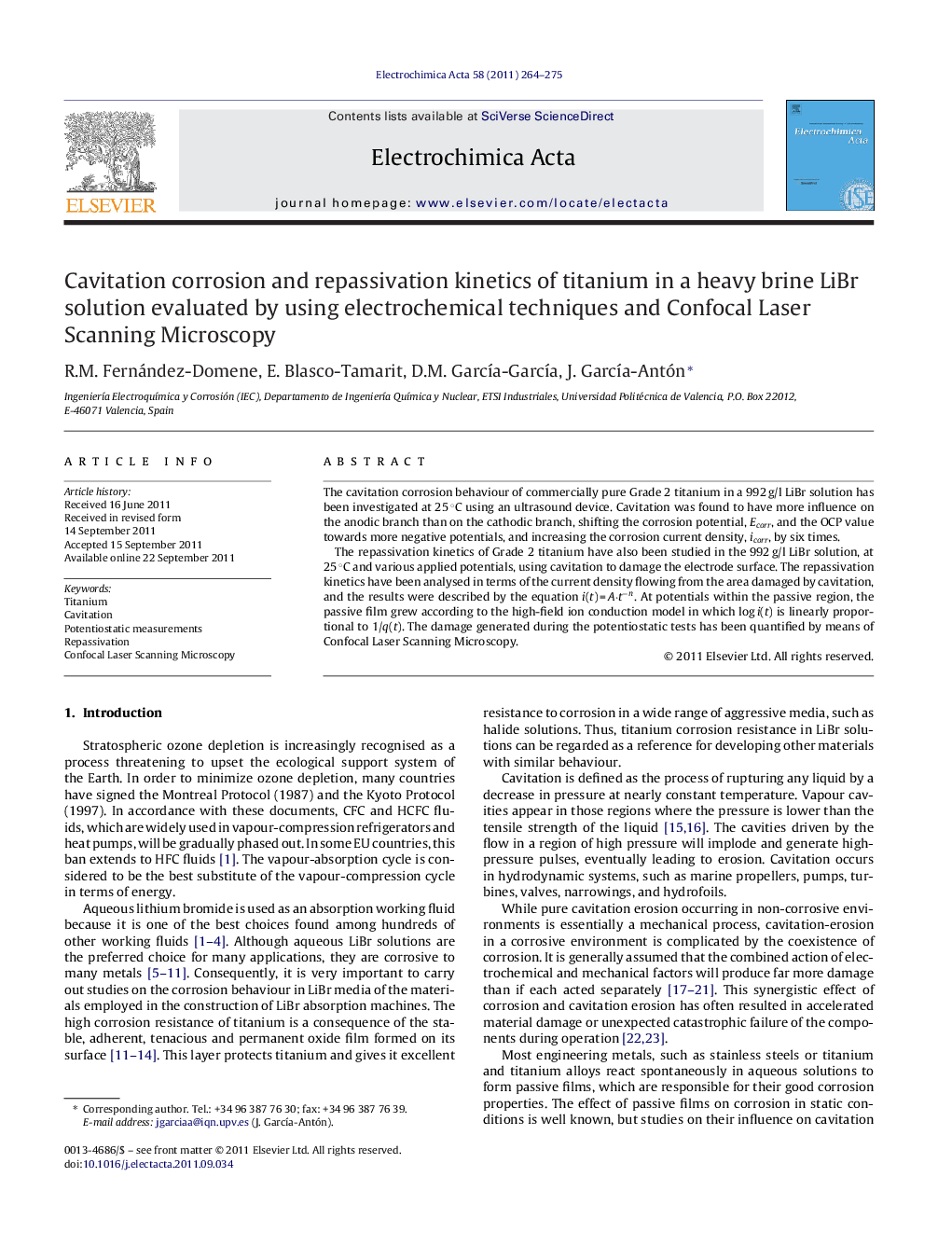| Article ID | Journal | Published Year | Pages | File Type |
|---|---|---|---|---|
| 189719 | Electrochimica Acta | 2011 | 12 Pages |
The cavitation corrosion behaviour of commercially pure Grade 2 titanium in a 992 g/l LiBr solution has been investigated at 25 °C using an ultrasound device. Cavitation was found to have more influence on the anodic branch than on the cathodic branch, shifting the corrosion potential, Ecorr, and the OCP value towards more negative potentials, and increasing the corrosion current density, icorr, by six times.The repassivation kinetics of Grade 2 titanium have also been studied in the 992 g/l LiBr solution, at 25 °C and various applied potentials, using cavitation to damage the electrode surface. The repassivation kinetics have been analysed in terms of the current density flowing from the area damaged by cavitation, and the results were described by the equation i(t) = A·t−n. At potentials within the passive region, the passive film grew according to the high-field ion conduction model in which log i(t) is linearly proportional to 1/q(t). The damage generated during the potentiostatic tests has been quantified by means of Confocal Laser Scanning Microscopy.
